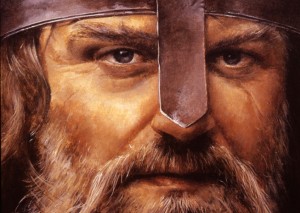Viking Warriors Facts
Responsible for mass pillaging and sacking over western Europe throughout the 9th to 11th Centuries AD, Vikings were fearsome warriors.
From the earliest reported raids in the 790s AD, the Vikings – Scandinavian explorers, warriors, merchants and pirates – wreaked havoc among western Europe, sacking towns, besieging cities and conquering nations.
Indeed, it wasn’t until the Norman conquest of 1066 that the Viking age was finally extinguished, a period of time that left a marked, lasting imprint on the continent – one that is still evident today.
Foremost of these echoes are the burial mounds of their warrior kings, tombs laden with the treasures, armour and weaponry that they won and possessed during their conquests.
Gigantic axes capable of splitting a man’s head in two, swords with jewelled hilts and blades over a metre long and intimidating masked helmets have been unearthed, telling a story- albeit incomplete – of the lives and battles these humans lived.
A great example of this custom can be seen in the burial complex at Sutton Hoo, Suffolk, England, an outstanding undisturbed ship burial that relinquished a wealth of Anglo-Saxon artefacts.
 Other traces of this warrior culture have transcended the ages via runestones, these markers were left by Vikings to commemorate great victories, exhibitions or disasters that befell them on their travels.
Other traces of this warrior culture have transcended the ages via runestones, these markers were left by Vikings to commemorate great victories, exhibitions or disasters that befell them on their travels.
One of the most notable examples, and one that best helps us to understand the travelling-band nature of Viking forces, is the Ingvar runestones located in modern-day Sweden.
This series of 26 stones was erected as a monument to fallen members of Ingvar the Far-Travelled’s 1036-1041 expedition to the Caspian Sea.
The stones tell of a great battle (probably the battle of Sasireti, Georgia) where many men died. One of the most poignant reads: “Porfrior raised this stone in memory of Gauti, his son. Gauti met his end in Ingvarr’s troop.”
This was the fundamental polarization of the Viking way of life. Their exploratory nature and fierce combative skills won them much during early-medieval Europe, with great cities and cultures ravaged by their roving bands. However, as they eventually learned in 1066, if you live by the sword, you die by it also.
![Viking Warrior Viking Warrior]() Facts about Viking warriors
Facts about Viking warriors
Ahoy! – Due to their penchant for plundering, burning and killing, ‘Viking’ was a word used to describe a pirate in early Scandinavian languages.
Having Olaf – The last Viking chief in the old independent tradition was Olaf II Haraldsson of Norway. Other chiefs and bands were absorbed into the army as a warrior caste.
Go east! – While the Viking raids of the 10th and 11th Centuries were mainly in western Europe, small bands of men travelled to the east, reaching as far into Asia as Constantinople.
Horny issue – It’s a misconception that all Viking warriors wore homed helmets. On the contrary, most Viking helmets probably featured little ornamentation.
Son of God – The most famous Viking was Ragnar Lodbrok. He’s best known for his assertion that he was a descendent of Odin, the foremost God in Norse mythology.

